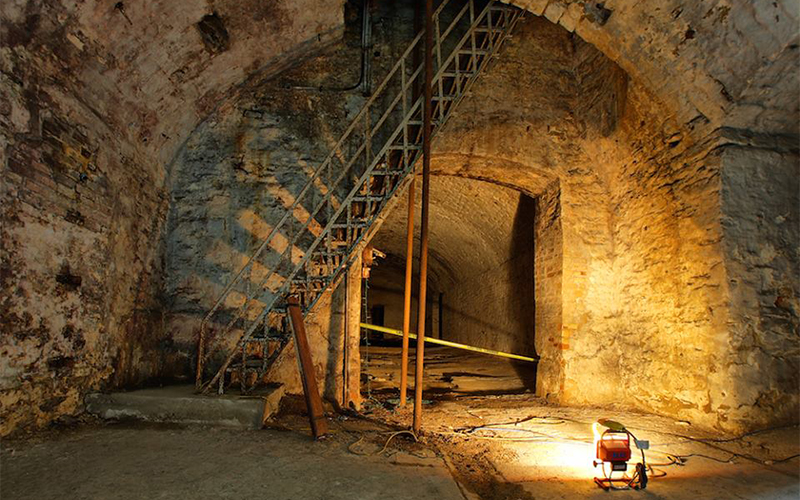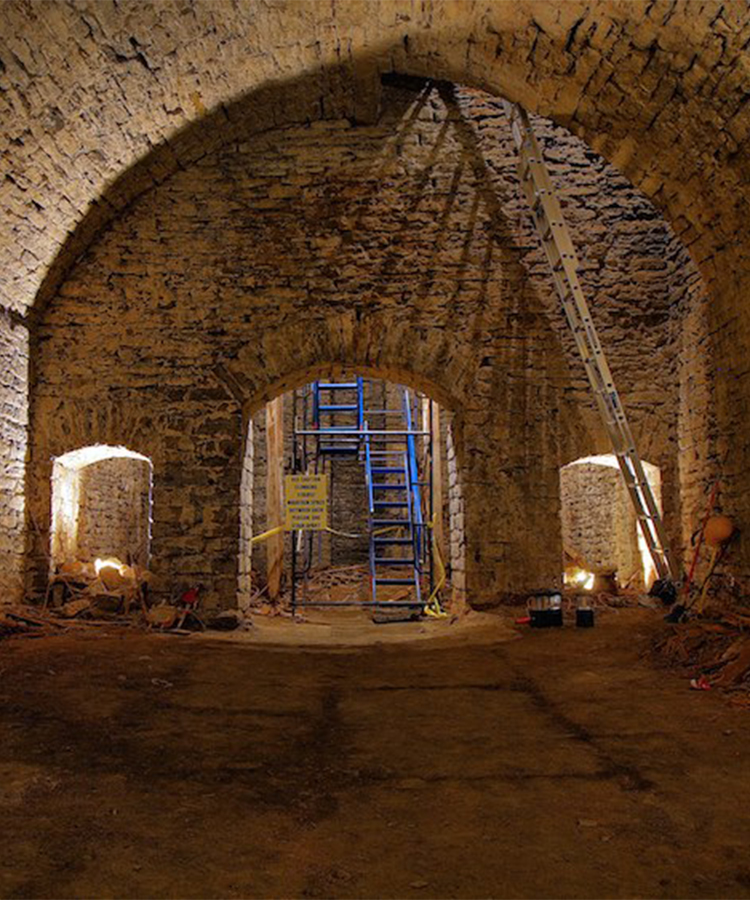American beer history varies depending on what area of the country you’re talking about. In the Northeast, the beer was inspired largely by the English. In the midwest, however, everything was German — the people, the heritage, and the beer.
Remnants of Ohio’s German-inspired beer history live on in Cincinnati, in a hollowed-out tunnel 30 feet below the streets of the old brewing district. The tunnels — 70 feet high in some parts — were storage and cooling rooms for barrels of lager made by the Kauffmann Brewery in the late 1800s and early 1900s. Yet for nearly a century, from 1919 to 2008, the beer tunnels were lost to history.
The Kauffman Brewing Company was a force to be reckoned with back in the day. It started in 1860, and produced some 1,000 barrels per year for the 161,000 people of the city. At its peak production in 1894, when the city’s population was around 300,000 people, the brewery was pumping out 70,000 barrels of beer a year.
It was a task to store that much beer at the correct room temperature before refrigeration. Beer would spoil if left out in barrels for days on end in the hot summer months. That’s where cellar temperature comes in, which is generally around 55 degrees Fahrenheit. For Kauffman Brewing Company, cellars meant an expansive system of underground tunnels.

Then, as is so often the story when talking about people who produce alcohol in the U.S., the story ends at Prohibition.
The Kauffman Brewing Company closed its doors in 1919 and sold the building. It switched hands numerous times and, at some point, the entrance to the tunnel was paved over. And that’s how the tunnels remained until 2008, when urban explorers came across the original blueprints for the Kauffman brewery. They saw tunnels but no entrance. So they brought out a jack hammer.
The explorers knocked out a rough hole that looks like it was made by Popeye with a metal sledgehammer. Then they threw down a ladder, and they saw history in the form of white-brick-lined tunnels. Bricks and trash had fallen into the tunnels from vents on street level. Flood lights now illuminate the mess and reflect off wooden planks, metal grates, and yellow caution tape.
There’s no longer beer being stored in the tunnels, but you can visit beer history for yourself with the Cincinnati Brewery District Tour, then grab a local beer from a Cincinnati new craft brewery. Because everyone knows that no beer history lesson is complete without a cold one.
